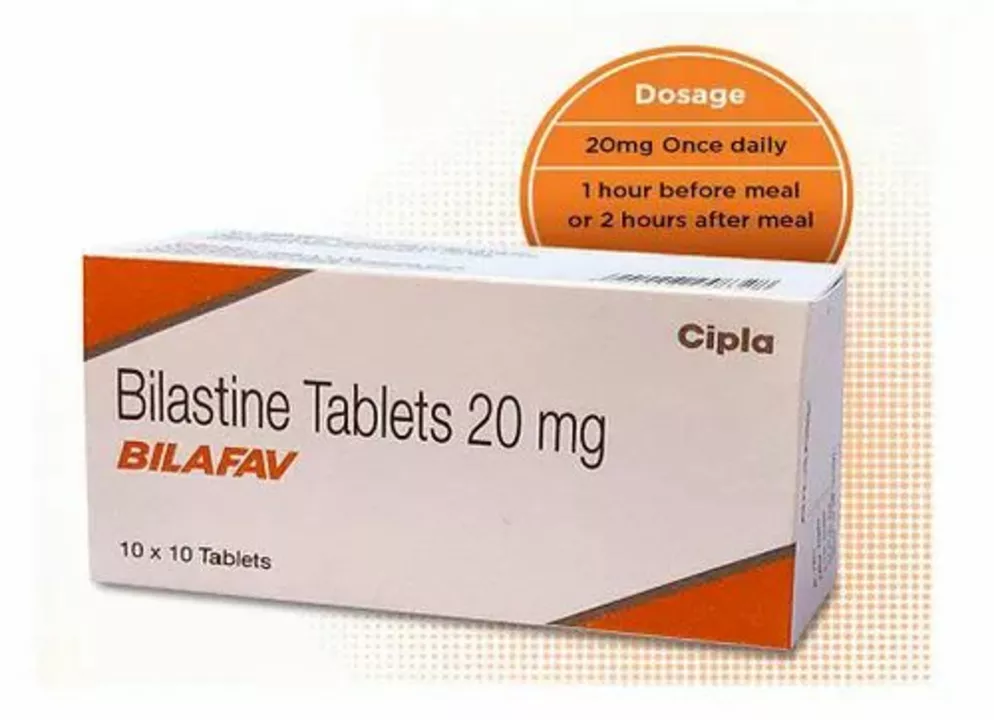Bilastine: fast, low‑sedation allergy relief
If your nose itches, your eyes water, or hives pop up, bilastine is a newer antihistamine many people reach for. It treats allergic rhinitis (hay fever) and chronic urticaria (long‑lasting hives). Users like it because it works for 24 hours and usually doesn’t make you drowsy.
Bilastine blocks histamine H1 receptors, the chemicals that cause sneezing, itching, and swelling. Most people notice benefit within an hour and keep relief through a full day with one dose. That predictable 24‑hour action makes it easy to fit into a daily routine.
Common doses are 20 mg once daily for adults. There are chewable tablets and normal film‑coated tablets in many countries. Pediatric doses vary by age and weight, so check local guidelines or ask a pharmacist before giving it to children.
How to use bilastine safely
Take bilastine on an empty stomach when possible: at least one hour before or two hours after eating. Fruit juices like grapefruit or orange can cut how much drug your body absorbs, so avoid juice around the dose. Antacids that contain aluminum or magnesium can also lower absorption; separate them by a couple of hours.
Avoid mixing bilastine with strong P‑glycoprotein inhibitors unless your doctor advises otherwise. Drugs like ketoconazole, erythromycin, or cyclosporine can change bilastine levels. If you drink alcohol, know that bilastine is less sedating than older antihistamines, but alcohol can still make you sleepy. Test how you react before driving or operating machinery.
Common side effects are mild: headache, dizziness, or dry mouth. Severe allergic reactions to bilastine are rare but need immediate medical attention. If you notice fast heartbeat, swelling of the face or throat, or trouble breathing, stop the drug and seek help right away.
Who should check with a doctor
If you have moderate or severe kidney disease, liver problems, are pregnant or breastfeeding, or are on multiple medicines, talk to your clinician before starting bilastine. Pediatric use depends on age and country approval, so confirm the right dose for kids. Older adults usually tolerate bilastine well, but a quick check with a provider is smart if other health issues exist.
How does bilastine compare to other antihistamines? Clinical data show it offers similar symptom control to cetirizine or loratadine but often with less daytime sleepiness. That makes it a good choice when you need clear thinking at work or school. Still, individual responses vary, so try what suits you and report problems to your doctor.
Buying and storing: bilastine may be prescription‑only or available over the counter depending on your country. Avoid dubious online sellers — pick a licensed pharmacy. Store tablets at room temperature, away from moisture and heat, and check expiry dates.
Quick practical tips: take the same time each day, avoid fruit juice near the dose, space antacids two hours away, don’t mix with unfamiliar meds without advice, and contact your doctor if symptoms worsen or side effects appear. Bilastine can be a simple, effective option for daily allergy control when used correctly.
The Role of Bilastine in Managing Contact Dermatitis

As a copywriter, I've recently learned about the role of bilastine in managing contact dermatitis. Bilastine, a second-generation antihistamine, has proven to be effective in reducing symptoms like itching and inflammation. It works by blocking histamine receptors, which are responsible for causing these allergic reactions. Furthermore, it has minimal side effects and doesn't cause drowsiness, making it a great option for those suffering from contact dermatitis. Overall, bilastine is a promising treatment that can help improve the quality of life for people dealing with this skin condition.
- April 27 2023
- Tony Newman
- 17 Comments
